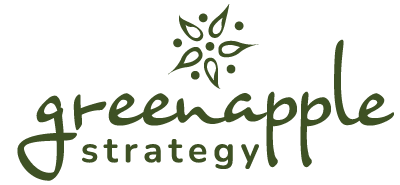We’ve talked to countless small business owners who feel overwhelmed by the constant barrage of marketing trends. It’s easy to get lost in all the new shiny objects and ever-changing algorithms. That’s why we’re here to cut through the clutter and provide actionable insights.
One of the things we love most about our role is paying attention to the trends that are shaping the industry, testing new ideas, and helping our clients discover insights to help build their brands and reach their goals.
As we head into the second half of 2024, we wanted to highlight a few recent reports and provide a curated overview of the most important insights. Hubspot recently released its 2024 State of Marketing & Trends Report. A few weeks earlier, ExplodingTopics released a list of the top 13 marketing trends for 2024 and 2025. In this article, we wanted to highlight a few trends we found most innovative and interesting and offer a few ideas on how our clients can incorporate them into their marketing strategies.
Trend #1: Short-form Video Offers the Highest Content ROI
According to the Hubspot report, short-form video is now the #1 content marketing format, with marketers saying it offers them the highest ROI. It’s also being used by the most marketers, with 44% of marketing companies executing short-form video strategy for their clients.
While short-form video has been a hot tactic for a few years now, it will continue to see the most growth in 2024, with marketers planning to use it more than any other format. At Green Apple, we’ve seen this for both B2B and B2C clients. Whether it’s creating short-form videos to highlight thought leadership, boosting visibility with YouTube shorts, or launching a TikTok strategy, thinking about incorporating short-form videos into any marketing strategy is quickly becoming essential.
Trend #2: Marketers Still Struggle with Disconnected Data, Tools, and Company Silos
The Hubspot report also underscored a common challenge faced by marketers: the struggle to harness data effectively. While data-driven decision-making is a top priority, disconnected tools, teams, and information often hinder progress.
Imagine this: Your sales team closes a deal, but marketing doesn’t have access to that crucial customer data to inform future campaigns. Or perhaps your marketing team generates valuable insights, but they struggle to communicate those findings to the rest of the business. These siloes can stifle growth and hinder overall business performance.
At Green Apple, we’ve witnessed the impact of aligned teams and integrated data and it has completely changed the way we build our marketing strategies. When sales, marketing, and operations work in harmony to share information and insights, magic happens. It’s like having a superpower that allows a company to make smarter, faster decisions.
Trend #3: Advertisers Prioritize User-Generated Content
The American Association of Advertising Agencies reports that 96% of consumers don’t trust ads, but a recent study found that 93% of marketers agree that consumers do trust content created by real people. Consequently, user-generated content (UGC) has become a goldmine for marketers. Platforms like Instagram, TikTok, and YouTube have made it easier than ever for people to share their personal experiences and opinions with a wider audience.
At Green Apple, we’re always trying to find creative ways to help our clients maximize the potential of user-generated content to increase engagement among their social followers. By encouraging customers to share their stories and experiences, you can build authenticity, trust, and social proof. It’s like having an army of brand ambassadors working for you.
Trend #4: AI is Driving Marketing Industry Growth
Artificial intelligence is no longer a futuristic concept; it’s a reality shaping the marketing landscape. From automating tasks to providing data-driven insights, AI is transforming the way businesses operate.
At Green Apple, our team has been all-in to help our clients leverage AI to improve marketing outcomes. AI isn’t going anywhere and we want to help our clients maximize its power while navigating some of the inherent challenges like balancing efficiency and authenticity.
Trend #5: Hyper-Personalized Marketing Evolves with AI
Personalization has become a marketing staple, but it’s evolving rapidly. With the help of AI, businesses can now deliver highly tailored experiences at scale. From personalized product recommendations to customized email campaigns, AI is transforming the way we interact with customers.
One of the most interesting trends to watch is how offline person-to-person experiences will be the next horizon for personalization. At Green Apple’s sister-company Olive + Leo, we’re specifically exploring ways to use AI to enhance personalization and build customer loyalty for hospitality businesses.
Ready to Elevate Your Marketing?
The marketing landscape is constantly evolving, and staying ahead of the curve is essential for small to mid-sized businesses. Remember, these trends are not one size fits all. It’s important to experiment, measure results, and adapt your strategy accordingly. By carefully considering these insights and implementing them strategically, you can elevate your marketing efforts and achieve your business goals.
Want to dive deeper into these trends or discuss your specific marketing challenges? Reach out to our marketing experts for a complimentary conversation. We’re here to help you navigate the ever-changing marketing world. You can also sign up for The Core, our monthly newsletter, for all the latest marketing trends and insights.







